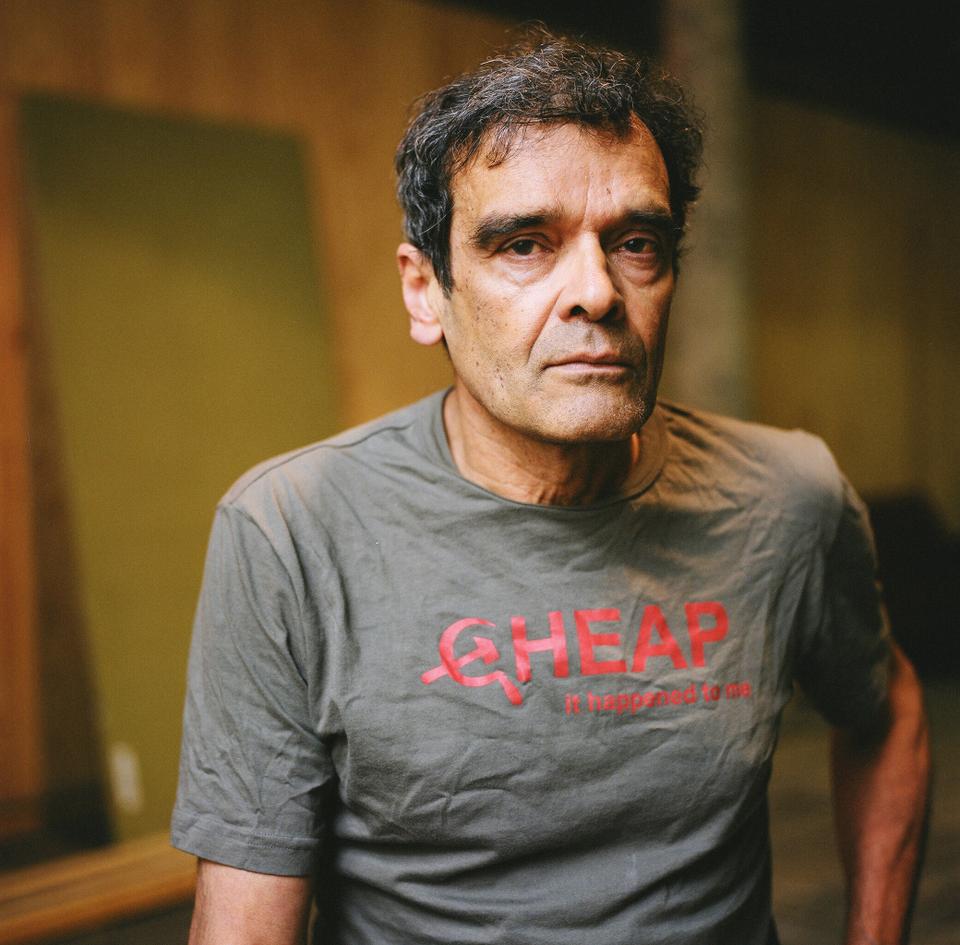
News
Harvard Alumni Email Forwarding Services to Remain Unchanged Despite Student Protest

News
Democracy Center to Close, Leaving Progressive Cambridge Groups Scrambling

News
Harvard Student Government Approves PSC Petition for Referendum on Israel Divestment

News
Cambridge City Manager Yi-An Huang ’05 Elected Co-Chair of Metropolitan Mayors Coalition

News
Cambridge Residents Slam Council Proposal to Delay Bike Lane Construction
Portrait of an Artist: Harun Farocki

Czechoslovakian-born filmmaker Harun Farocki has used video games, soccer matches, and remote weaponry as subjects for his films. No stranger to experimentation, Farocki has pushed at the boundaries of his medium, defying categorization by producing pieces in television, narrative film, documentary, film essay, and criticism. Many of these works have been displayed in museums and galleries around the world. Since the creation of his first film in 1966, he has used his work as social commentary, all the while exploring the capabilities of film.
Farocki is currently co-curator of an exhibition at the Carpenter Center, entitled “The Image in Question. War-Media-Art.” Running from October 21 to December 23, the exhibition, which explores the nature of modern warfare and its representations, features a variety of media, from photography and computer animation to multi-screen video installations. Farocki is also teaching two classes at Harvard this semester, both of which explore the form and influence of documentary film.
The Harvard Crimson: Could you give a quick overview of the exhibition?
Harun Farocki: The title is “War-Media-Art,” so from that you see already that it is mainly about the question of how war can be represented nowadays in an eloquent way. This is not really a question that is answered by the popular media—television tries to answer it, but how effective is that really? We’re looking at how different forms of art can represent war: should it be computer images or animation and so on: how can war be represented ethically?
THC: What do you think are the difficulties of representing modern warfare?
HF: Wars today are very asymmetrical—one party is far stronger than the other, which is quite unlike earlier warfare. We also see that the classical moments in which wars have been decided—moments like the battle, the siege, and so on—no longer exist, and now we have remote weapons, where you can sit in a bunker in Florida and launch a weapon. All of these things have changed. Plus, the images themselves have become a part of war—not as propaganda, but as part of communication and part of the tactics of war.
THC: What sorts of images are playing an active part in warfare?
HF: They are what I call operational images: no longer needed just to depict something, they are needed as tools of pattern recognition. We see satellite images being used by software to find certain shapes and then they are translated into round shapes or square shapes or whatever to find the target. Images are a means of recognition, of tracking; it’s a total integration into the strategy of war.
THC: The exhibition deals with video game technology and simulation. How did you become interested in that medium?
HF: It’s the same question of how war can be represented. Obviously computer animation is no longer a tool for kids, it has become a tool for exercises for soldiers, for tactical issues. It is almost on the verge of entering standard usage, to the point that the photographical image seems to be. These images are striving to be like photographical images, but the difference is they can use real data, that you can put in data and manipulate the image. So now the spectator can have a much more active role in really altering the image.
THC: You have been using multiple screens in your work for about a decade now. What do you think this particular technique offers?
HF: There is a strange interaction in using two screens—you get a depiction of the same moment from totally different points of view, and it is difficult for the viewer to align these points of view. It can also make the world more spacious, it can remove linearity—the co-presence of these images has a very interesting effect.
THC: Could you speak a little bit about the classes you’re teaching?
HF: I am teaching two classes here at Harvard. One is for graduate students called “Style and Structure:” there we are looking at the basis for the structure of the documentary—is the focus the voice, or narration, or composition of images, or is there something deeper? The second course is for undergraduates, called “Contingency and Control,” and it’s about films which borrow from the documentary. This began many years ago with the Neorealists, but we still see many feature films which strive to be like the documentary. It is a really interesting phenomenon, and we look at 15 or 16 examples.
Want to keep up with breaking news? Subscribe to our email newsletter.
